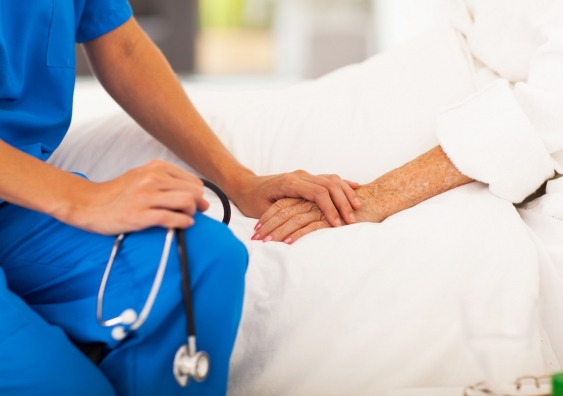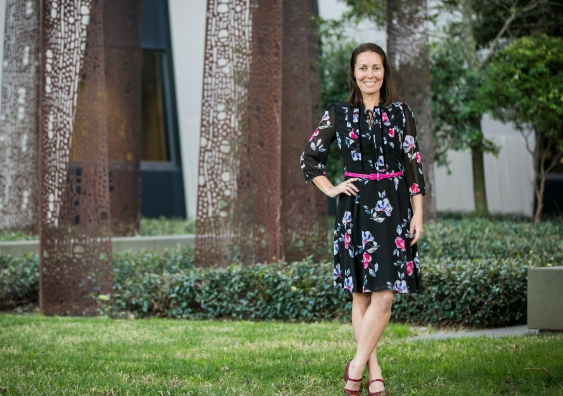Why Australia should reform medical negligence
Alternative dispute resolution options would improve outcomes for patients harmed by health care.
Alternative dispute resolution options would improve outcomes for patients harmed by health care.

Healthcare providers aim to help us get better when we’re hurt. But what happens in the unfortunate circumstance when injury arises in their care?
Medical malpractice is an avenue of legal action that patients and their families may take in the event of a medical injury. Also known as medical negligence, these claims can take many forms, but often arise from misdiagnosis, delays in treatment, and other harm in care and health management – even where health providers tried to provide quality and safe care.
UNSW Law & Justice Associate Professor Jennifer Schulz (formerly Moore) has been researching the aftermath of medical injuries for over a decade, working with health providers, patients and their families. She says the “misery” of medical negligence litigation is well documented.
“Medical negligence litigation is deeply traumatising for everyone involved, but it’s particularly miserable for patients injured during health care, and their families,” A/Prof. Schulz says. “But there are alternatives which evidence shows better meet patients’ and providers’ needs and align with values of a patient-centred, safe and compassionate healthcare system.”
In Australia, patients harmed by health care should experience open disclosure through their health providers. There are out-of-court resolution options, including internal reviews undertaken by the health care provider. If a patient dies, the coroner may also investigate. Otherwise, patients have the option to file a civil claim for medical negligence.
While some argue that medical negligence litigation helps to hold healthcare providers accountable, A/Prof. Schulz says there is little evidence to support this – patients rarely win cases, which can also drag out for years.
“There are numerous shortcomings of medical negligence litigation. It’s not only costly but fundamentally misaligned with health policies on quality and safety in healthcare.”
Medical negligence litigation also encourages defensive clinical practice and a punitive culture which undermines patient safety learnings.
“It fails to meet the needs of patients, families or providers by encouraging a blame culture and stifling communication. It conceptualises patients as adversaries and can disproportionately disadvantage vulnerable populations,” A/Prof. Schulz says.
The burden of medical injuries on both the legal and health systems is enormous. Medical injuries are one of the leading causes of injury around the world.
A/Prof. Schulz says Australia should look to other models of dispute resolution used worldwide, which lead to better outcomes for all parties involved.
“Alternative approaches allow us to look upstream at the lessons we can learn from the harm event, to put things in place to help prevent, or minimise, harm from happening again, which is what patients say that they want after they experience harm, “A/Prof. Schulz says.
In New Zealand, patients can seek reparations for medical injuries through a universal no-fault scheme rather than negligence litigation. Here, injured patients, including non-citizens who are injured while visiting New Zealand, can receive government-funded compensation after a patient safety incident.
“Patients, or their health providers, lodge a claim with the Accident Compensation Corporation, which provides a no-fault scheme for the compensation and rehabilitation of personal injuries, including ‘treatment injuries’ (medical injuries),” A/Prof. Schulz says. “It encourages a culture of reporting and patient safety improvement.”
There is also an economic case. In a review undertaken by PWC, no-fault schemes were found to be more cost-effective than medical negligence and provide compensation more readily to patients injured by health care.

Associate Professor Jennifer Schulz. Photo: Anna Kucera.
“It’s a lot easier for patients to navigate, and the system produces more timely compensation to more patients, as well as encourages improvements in patient safety,” A/Prof. Schulz says.
In the United States, the options available for patients is jurisdiction specific. While patients harmed by health care can file a civil claim for medical negligence, in a handful of hospitals, injured patients can choose to resolve disputes via a communication-and-resolution program.
“Instead of going to court to sue their healthcare practitioner, the healthcare provider engages in open discussions with a patient and their family soon after the harm event, which facilitates patient voice. The provider also undertakes a patient safety review and apologises, and in some cases, offers compensation,” A/Prof. Schulz says.
A recent paper from A/Prof. Schulz supports the case for reform in England, which is currently reviewing medical negligence and considering replacing it with an alternative such as no-fault compensation. She says Australia should also follow suit.
“The research is very clear that we should be moving on from medical negligence and looking to adapt one of these alternative systems to the Australian context.”
Implementing communication and resolution programs would be relatively straightforward through reforms, A/Prof. Schulz says. While a no-fault scheme would be preferable, it would require a complete overhaul of our existing torts (civil) system.
“Some of the components are already in place in Australia, such as open disclosure, and the public healthcare system would make it possible to get off the ground. It would just be a matter of public appetite and political will,” A/Prof. Schulz says.
For A/Prof. Schulz, the motivation to reform medical negligence litigation is driven by a desire to have a positive impact on injured patients and families.
“As you can imagine, it’s a terrible thing to experience harm in healthcare. So, when I do research, it’s with them and for them,” A/Prof. Schulz says.
A/Prof. Schulz and colleagues Professor Michelle Mello (Stanford University), Professor Marie Bismark (University of Melbourne), and Professor Crispin Jenkinson (Oxford University) co-designed a survey with medical injury patients, which has been implemented by healthcare providers in New Zealand and the United States.
“When someone gets harmed, a survey is completed to work out what we can do to help patients in these situations. Instead of the researchers or health providers writing the survey alone, we wrote the questions with the patients to develop a compassionate tool, based around their needs,” A/Prof. Schulz says.
Read more: A call for consistent language on voluntary assisted dying laws
A/Prof. Schulz also wants to draw attention to the stories of patients through her research.
Avalon was 14 when she almost died of an overdose from a medical error. She was deeply traumatised and experienced ongoing physical and mental conditions. However, she was excluded from communications in the aftermath of the incident because of her age.
“Avalon was the one who was harmed, but nobody was speaking with her,” A/Prof. Schulz says.
After participating in one of A/Prof. Schulz’s research projects, the hospital engaged in communication and issued an apology to Avalon. Avalon is now studying to become a physician’s assistant and this year gave a guest lecture to health and medical law students at UNSW.
“For patients, they might not be able to get closure. But having that communication with their healthcare providers can be transformative and restore broken trust.
“That’s one reason why I want to help give more patients like Avalon a voice.”